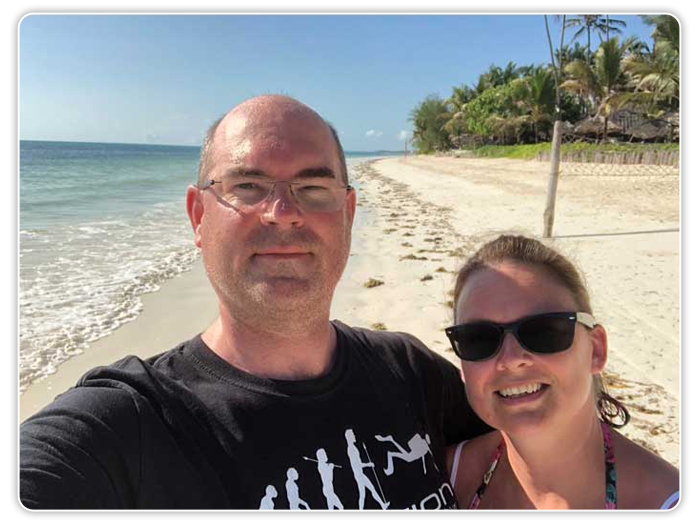Million Dollar Video Ad Script Templates
The other day I wanted to create some ads to place on YouTube.
No big deal, right?
Except that the right ad can make a fortune, while the wrong ad would cost me time and money with no return. I knew I had to get this right, so I did what most people do… I went online and searched for help.
And searched.
And searched.
Surprisingly, I could find very little about how to craft a 30-60 second ad for YouTube that will pull in the customers.
And maybe you’ve been faced with the same dilemma. Asking around, I discovered that for most marketers who want to use short video ads on YouTube, Facebook and so forth, the sticking point is creating the ad itself.
When a great ad can literally give you a license to print money on demand, and a lousy ad will rob you of time and money, there should be more information on how to craft these ads.
In fact, there should be TEMPLATES.
Follow the template, outline your ad and then create it and profit.
Good news! With further research and help from people who run video ads all the time, I now know how to create profitable video ads for almost anything.
And today I’m going to share this information with you, giving you not just one, but 10 simple templates you can use to create high converting ads that target your very best prospects.
No matter what you might be selling or what action you want your prospects to take, I think you’ll find a video ad script below that will work for your purpose.
First, let’s cover a few general principles that apply to all video ads…
Getting Ready to Write Your Script
There are certain elements that are consistent, regardless of what type of video you are making.
The process begins not with a template, but with questions you need to answer about your target audience, your offer and exactly what you want to happen next. The better you can answer these questions, the more effective your video can be at converting your prospect to the next step, whatever that might be.
Questions:
What’s the main purpose of this video?
Is it to get viewers to your sales page?
To get them to sign up for your email list?
To visit your blog, view a more in-depth video, sign up for a webinar or join your social media group?
Do you want them to text or call you?
You must have a concrete idea of what you want your viewers to do once they’ve finished watching your video. You only get ONE choice here – one place to send them.
It’s almost always a terrible idea to try to sell them on a purchase in a short video ad, but 60 seconds is plenty of time to convince them to take a smaller action, such as visiting your sales or squeeze page.
Who is your exact target audience?
It is freshly unemployed people looking to make extra income?
Middle aged women who want to lose weight?
Professionals who need help with retirement planning?
Beginning vegetable gardeners who need a game plan for raising, harvesting and processing enough produce to feed their family for a year?
It’s vital that you know EXACTLY who you are targeting. This should be your IDEAL customer, the one who is most likely to purchase your product or service.
You’re going to speak directly to them and not to the masses. Remember, if you try to appeal to everyone, then no one will be interested in what you offer. Every word you use should appeal to your very best prospect.
What is their problem that you are going to solve for them?
Not their 5 or 10 problems, but that one BIG problem that they need solved ASAP. Because this is a SHORT video, it must be focused on solving ONE problem with ONE solution – your solution.
How does your solution help them solve their problem?
After answering the previous questions, this one should be easy and clear cut. If it’s not, you’re on the wrong track. Exactly how is your solution the right solution for them?
For example, let’s say you’re targeting busy, intelligent women age 40 – 60 who are 50 pounds or more overweight and just learned their health is deteriorating because of their weight. Your goal is to get them onto your list and sell them on your $500 coaching program. Your solution to their problem is your program designed just for their needs. This program helps them lose 2 – 3 pounds every week without going hungry, without time-consuming meal prep, without expensive foods and supplements and without hours of painful exercise. And you’re going to give them this solution with a free 5 day training program (that sells your $500 coaching course) which they receive just for visiting your page (where you capture their email address and ask them to sign up to your Facebook Group, where you hold the live lessons).
That was just an example, of course. Maybe you’re simply sending them a free cheat sheet or lead magnet. Or sending them to your sales page (be sure to capture their email address) and using retargeting for those who don’t buy the first time. The options are limitless when you’ve got the templates to do high-converting video ads.
Let’s dive into those templates right now…
1: Classic Video Ad
This is the simplest copy framework – the same one used in many sales letters – and it works like this:
Problem – Spotlight the painful problem your prospects are facing
Agitate – Magnify the underlying pain behind the problem, accessing your viewer’s emotions
Solution – Show them how to solve this painful problem with your solution
The problem should be the biggest, most painful problem that your prospects are facing that your product solves. In a one-minute video ad, for example, you do not have time to cover more than one problem. Pick your best one and make it good. This might even be a hidden problem beneath the obvious problem. For example, the hidden problem might be embarrassment at not having any energy and always feeling tired, when the main problem is needing to lose weight.
Main problem: Do you want to lose weight?
Hidden problem: Do you avoid certain activities with friends because you are embarrassed by your appearance and your inability to keep up?
You can see that the second approach can be much more compelling than the first one.
Agitating the problem is when you make your viewers feel the pain of having this problem. Ideally, you want to create contrast between the painful problem and the relief you are about to offer in the solution.
Be sure the agitation is as relevant to the type of person you are targeting as the problem itself.
Problem: Do you avoid certain activities with friends because you are embarrassed by your appearance and your inability to keep up?
Agitation: Do you wonder if your friends secretly joke about your weight when you’re not there? Are you worried that your spouse will leave you for someone thinner who can keep up with their active lifestyle?
To find pain points and ways to agitate the problem, research what others say about the problem. Dig deep and find out why they really want the solution they seek, and then use their own words in the video.
The solution is ideally reached in 30 seconds or sooner in your video.
Here’s what that might look like:
Do you avoid certain activities with friends because you are embarrassed by your appearance and your inability to keep up?
Do you wonder if your friends secretly joke about your weight when you’re not there? Are you worried that your spouse will leave you for someone thinner who can keep up with their active lifestyle?
Despite what everyone tells you, if you’re more than 25 pounds overweight then simply eating less and exercising more will not help you to lose significant weight. That’s because metabolic syndrome is very likely keeping you fat as well as endangering your health.
But it is possible to naturally reset your damaged metabolism and lose the weight without starving, without crazy exercise and without dangerous pills or potions.
Now introduce your solution and explain how your product will fulfill the promise you’ve made. This section will likely be the bulk of your script, but don’t go overboard here. Simply communicate enough information to get your viewers to take the next action you seek, whether that’s signing up to get your lead magnet, visiting a website, joining a Facebook Group or anything else.
2: The Before, After and Bridge Script
This is somewhat similar to the first script. In fact, most of these scripts have similarities.
Here’s the outline for this one:
Before: “This is your life right now, and it stinks.”
After: “Just imagine how glorious your life would be without this problem or with this benefit.”
Bridge: “Here’s how you get from the stinky before to the glorious after.”
Your goal here is to paint two pictures in your prospect’s brain – the before and the after – and then show how to get from the awful place they are in to the wonderful place they want to be.
Real estate agents do this when they hold open houses. You might not even be seriously interested in moving. Maybe you’re just bored and looking for a way to pass the time, so you figure you’ll snoop in other people’s homes during the open houses held by real estate agents to show off homes.
Did you know that most homes are NOT sold through these open houses? And yet agents still hold them because they know this is a great way to find buyers. When you start looking at the gorgeous homes you DON’T have and then you go home to your small, dull house and compare what you’ve seen to where you’re living, you’ve got a ‘before’ and an ‘after’ stuck in your mind. And the difference between these two pictures might be all it takes to get you to start seriously shopping for a new house.
This is what you want to accomplish in your video. Remind your prospect of how miserable their current situation is and contrast that with what they could have if they get your solution.
3: The Promise, Picture, Proof and Push Script
What if your product doesn’t solve a big problem? Or what if your audience is not yet aware they have this problem?
Then it’s time to try the 4 P’s.
Promise – Make a bold claim that causes viewers to snap to attention
Picture – Get viewers to imagine their life once they get this promised benefit
Proof – Explain how your solution works and back it with supporting proof.
Push – Recap what you’ve just explained in a very clear manner and then give viewers specific instructions on what to do next.
This is your go-to script when you there is no major pain to be solved. For example, when computers were first introduced, few people felt there was a major gap in their lives because they didn’t have one. The same goes for MP3 players, smart phones and just about any new technological advance.
When you’re filling a need people don’t know they have, you can’t talk about the pain of not fulfilling this unknown and uncared about need. Instead you talk about the big benefit or claim, paint a pretty picture of having this product, prove that it works and give viewers a little push in the right direction.
More Video Ad Templates:
Those first 3 templates are enough to cover 80% or more of your video ad needs.
But because I’m pretty sure you can’t have too many video ad templates in your arsenal, and because there will be times when you need something different, I’m going to quickly share a few more with you in just a moment.
Also, there might be times when the purpose of your video isn’t to directly sell, but instead to explain something, make an announcement and so forth.
Your video is still short, direct and to the point like a video ad, but the main goal isn’t necessarily selling the click. At least, you’re not looking like you’re selling the click. Paradoxically, there can be times when you will get a greater response from not selling than selling.
For example, when an icon in your industry passes on, you might do a short tribute video to that individual. That last thing you want to do here is end the video with, “Buy our product!” Companies get lambasted, flamed, roasted and toasted for doing this. But tactfully placing your business name in the closing frame is fine. People who loved this person see your video and are moved to find your site or reach out to you on social media.
That’s just one example, and I’m sure you’ll run into many more as you do more and more marketing.
And there are even more occasions when you need a quick video that adds to the selling experience, such as a video to explain how your service fulfillment works, a video testimonial for your product, an interview of a case study and so forth.
But since the main purpose of the majority of your videos ads will likely be to sell, most of the following scripts I’ve chosen here can also be used to promote your products as well.
Here then are 5 more templates you can use for making your next video ads:
4: The Video Announcement
This can be to announce anything newsworthy to your audience, including the release of new products, adding more features to an existing product, an awesome offer or sale of a product they’re already familiar with and so forth.
In general, you’ll use an outline like this:
Short introduction – This is one of two sentences designed to grab attention and introduce the BIG NEWS you have. This might be in the form of a questions, such as…
“Are you sick and tired of being terrified of catching the Coronavirus every time you leave your home? When you come home, do you spend the next 14 days waiting to see if you get sick?”
Main message – Next is the big picture of the news you’re sharing.
“Vira-Shield can protect you from 99% of airborne virus and bacteria particles in the air.”
Details – You’ve given them the big picture, now zoom in and give them the details.
“It’s comfortable, it keeps you cool and breathing is a breeze. Not only that, but when worn correctly it is proven to filter out 99% of dust, bacteria and viruses – including Covid-19 – by a double-blind University of Nox scientific study. Plus, you look like a total badass when you wear it, too.”
Call to action – What should they do right now?
“Click here right now to choose one of 14 colors and finally enjoy peace of mind whenever you leave home.”
I gotta tell you, If I saw this video I would be clicking that link so fast my mouse would melt.
5: The Struggling Hero Video
This video is great for explaining almost anything that involves solving a problem. Added points if you can make it memorable, too.
The struggling hero starts with a character who is struggling with the same problem as your audience (I know, what a coincidence, right?). This works spectacularly in animation, but you can use real people or a slideshow.
Introduction and Problem – Introduce your character and his/her problem.
“Meet Bob. Bob is feeling sad because people have been avoiding him lately – even his wife Jill, and Bob’s afraid it’s because of his bad breath. In fact, it’s gotten so bad, even his dog Rex has been staying a leash length away from Bob.”
Solution – Introduce the solution, giving the big benefit. Your hero can be introduced to the solution by another person, stumble upon it by himself, or the narrator can speak directly to him.
“Bob, have you tried Tasty8 Mouth Rinse? It’s proven to eliminate even the worst mouth odors for 8 whole hours.”
How it Works and Results – Now go into detail.
“Tasty8 Mouth Rinse uses three different kinds of bacteria neutralizing agents to completely rid your mouth of odors and leave your breath fresh and tingly clean for a whole 8 hours. Just rinse for 30 seconds and you’ll have breath so fresh your confidence will soar and women will throw themselves at you. Or at any rate, your wife will at least kiss you again.”
(You do realize I’m making this up off the top of my head, right?)
Call to Action – “Visit our site right now for a 20% off coupon when you sign up for our plain brown wrapper auto ship program.”
6: Breakthrough Video
This type of video explains something new of a breakthrough nature. If you have a unique solution to a problem, for example, then this is the script to use. Because you want to get to your breakthrough as fast as possible, you’re going to immediately start with the…
Problem – what is the problem and why is it so terrible?
“Your friends are afraid to tell you that your cat’s litterbox smells worse than you think – a LOT worse. In fact, they’re talking behind your back about how they hate visiting your house because it’s so bad.”
Hopelessness – there was no real solution until YOUR solution.
“Until now, all you could do was try to cover the smell with scents or clean the litter boxes multiple times per day.
Unique Solution and Why it Works – why and how is your solution so much better or more advanced than anything else out there?
“But thanks to our exciting discovery, your friends will never again be afraid to enter your house. Miracle Cat Litter with exclusive odor absorbing clay beads harvested from the Valley of the Picas removes 99.979% of all odors. These amazing clay beads are just the size of pinheads, yet they can remove 1000 times their own weight in odor. And they’re completely natural and healthy, with no toxic chemicals or perfumes to hurt your kitty.”
Call to Action
“Visit our website now to see Miracle Cat Litter in action with our exclusive Smell-o-Vision technology and get your coupon for 25% off your first bag.”
Smell-O-Vision?? Sure, why not…
7: One of the Gang Videos
Your first goal with this video is to establish common ground. It could be “us against them” such as a common enemy, or simply “you’re not alone” in having this problem.
Establish the Common Interest – You can ask a question, make a statement, let them know they are not alone or point out the common enemy.
“Don’t you hate it when your coworker in the next cubicle just won’t shut up? This happened to me and she almost got me fired.”
Problem – what’s the problem you’re going to solve?
“I know exactly what it’s like to continuously be bothered with distractions at work. Because I couldn’t get any work done or even think straight with this coworker continuously talking, my boss thought I was slacking off. He was going to fire me and I knew I had to do something quick.”
Solution – “Thank goodness, I discovered Pure Quiet Headphones. When I slip these on all background noise disappears. I can’t even hear my coworker, and she’s only 6 feet away.”
How it Works – “These headphones work by canceling out all incoming noise, as well as generating a very soft brown noise that helps my brain to intensely focus on my work. Now I get twice as much work done in half the time. I’ve gotten two promotions in 14 months and my pay has doubled. Just imagine what these Pure Quiet Headphones can do for you!”
Call to Action – “Visit our website for a no-risk trial today.”
8: The Talk Show Sales Ad
I love these because they’re ads cleverly disguised as interviews. Most everyone likes interviews and talk shows. The back and forth repartee keeps it lively and interesting, like listening in on a private conversation between an expert and someone who knows how to extract all the best info from him or her.
Place a video interview in your sales funnel and people won’t even realize at first that they are being sold to. If we think about the webinar in which someone interviews the expert – but you call it an interview instead – then you’ll get the idea.
One note about the talk show or interview ad is this: If you’re looking for brevity, this format is seldom the answer. When is the last time you heard a one minute talk show? But if you have at least 5 minutes or more, then you might consider this one.
For your ‘interview,’ write down the key points and then have a real conversation using this outline:
Introduction – the person doing the interview introduces herself and then the expert, explaining what problem they’re going to discuss (solve) in this interview.
Establish credibility – The person doing the interview asks a question to get things rolling such as this person’s experience in solving this problem.
Agitate the problem – Then they might go in depth on the problem; why it’s terrible and why it needs to be solved.
Give hope – The person being interviewed can talk about how they had this problem or how some of their customers or clients had this problem and what an enormous difference it made when the problem was solved.
Other solutions – Then they talk about various well-known solutions, and what is wrong with each solution or why they are problematic or difficult to implement, all while letting listeners know there is a better way which they will talk about in just a moment.
The Solution – Finally they talk about the solution they want the audience to embrace. Time wise this takes about one third of the interview.
Call to action – And lastly there is the call to action.
9: Video Testimonial
This is super simple and short. But never underestimate the power of a video testimonial, especially if the speaker is well-known or has some sort of implied credibility such as being the CEO of a company.
Introduction – the speaker introduces herself. “Hello, I’m Elizabeth Michaels, Marketing Vice President for Incapacitated Pharmaceuticals.”
The Problem Statement – this is what came before your brilliant solution.
“Before the Hypnotized Doctor App, we had to send sales reps out to convince doctors to prescribe our drugs.”
Results – what’s the result of using your solution?
“But then we got smart and hired Bob’s Hackers to break into every doctor’s phone and install the Hypnotized Doctor App. Now we never need to send out sales reps because every doctor in the country is continually hypnotized while they sleep to prescribe our drugs to every patient they see. Our sales are through the roof, our shareholders are happy and I’m about to retire to a South Seas island with no extradition laws.”
Conclusion – the person giving the testimonial can make a recommendation to anyone watching.
“If you want to influence doctors, just do what we did and in a few short weeks you can be retiring, too!”
To any pharma reps or companies out there… just kidding!
To any doctors reading this… you might want to check your phone. Just in case.
10: Story Video
This one is my favorite. I should probably use it more because everyone – EVERYONE – pays attention to a story that captivates them. And the payoff for a story video can be high if it happens to go viral on social media. But this one also seems like more work to me, which is why I don’t often take the time to use it.
To be fair, most of the other scripts do incorporate a bit of a story arc. For example, here’s where you are (it sucks!) here’s where you could be (it’s wonderful!) and here’s how to get there.
But to do a real story video, you’ll want to use this basic story structure that has been working for literally thousands of years:
Inciting Incident – The hero’s normal life is disrupted by some event that provides a challenge or goal.
(Woman receives an invitation to her 25th high school reunion and is horrified to realize the ex-cheerleaders will make cruel jokes about how she looks.)
Turning Point – The hero gets busy and accepts the challenge or goes on the adventure or makes a decision to right a wrong, etc.
(Our hero decides she will absolutely lose the weight and get in shape for the reunion.)
Midpoint – After some success and some failure, the hero reaches a point of no return.
(Our hero loses a little weight but is starving and exhausted and can’t go on. Then one of the dreadful cheerleaders calls her to see if she’s coming, and she accidentally brags to this cheerleader about wearing the same outfit she wore on graduation day. Now she HAS TO lose the weight.)
Escalation – The hero has to risk everything to win, or the stakes have become unbearably high, or something has made it even more imperative that the hero wins.
(She has everything on the line now, because word has spread and everyone is expecting her to wear her graduation outfit.)
Final battle – the exhausted hero learns her biggest lesson from her worst failure.
(Her weight is right where it was and there are only 4 weeks left to the reunion. Starving and working out like crazy did NOT work. She is about to throw in the towel and not go to the reunion when she finds your program. She dives in and in 4 weeks she loses 30 pounds.)
Hero defeats the antagonist and finally achieves her goal.
(She wears that same sexy outfit she wore at graduation. The cheerleaders (who have all gained weight) are green with envy. The high school quarterback asks her to dance. Sparks fly. The end.)
That’s a LOT to fit into a short video but it can be done. Animation works really well for this.
And there you have it – 10 different scripts you can use for your ads and whole lot more. Keep these handy because you’ll find they can also work well for other mediums beside video. For example, doing live calls, writing sales copy, email marketing and more.
A few things:
- Watch your pacing
- Never use more words than you need
- Make every word you do use count
- Never, ever be boring
And have fun! Making video ads can be a blast because they are so short. It’s excellent practice for making longer videos, and it’s a skill you’ll always be able to use in your marketing.
What This Guy Stumbled Across By Accident Nearly TWENTY YEARS AGO Is Anything But Average.

It's Still Banking Him $25,000 - $35,000 EVERY SINGLE MONTH!
Privacy Policy: We value your privacy. You can unsubscribe from receiving future emails with 1 click at any time.

















